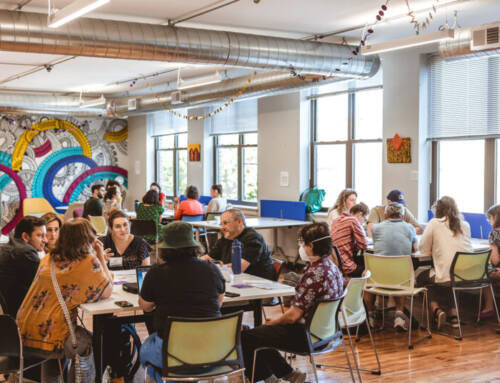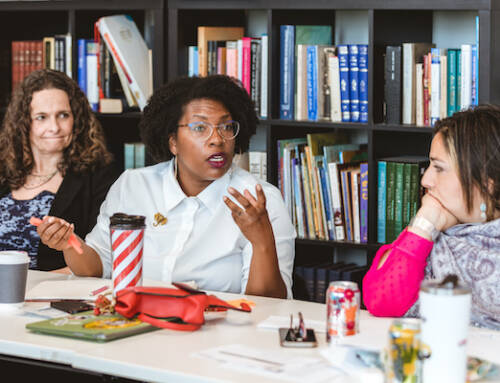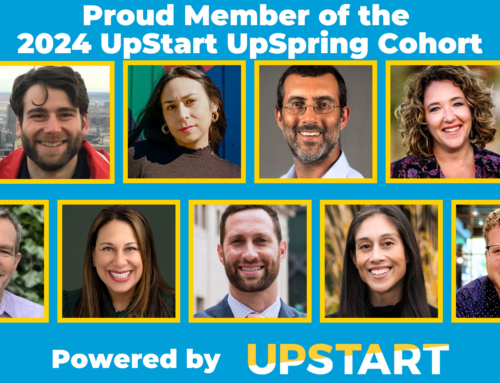This article first appeared on Jewish Futures.
 My father grew up in the real Bronx a world very different from the pseudo-Bronx of Riverdale where he raised his children. He played stickball on the streets with the Italian kids, who called him Luigi The Jew, and came home regularly with torn pants, skinned knees, and the fear of facing his mother, who would inevitably say to him: If youd been the first child, you wouldve been the last! Then hed have to suffer shopping for new pants at Barneys, where he was an irregular husky, a size that weighed on his identity. His family was a member at the Young Israel of Parkchester, an Orthodox community composed of the lower-middle class workers of the East Bronx, many of whom were immigrants and did not have any Jewish education or background. (Professor Jeffrey Gurock, who also grew up in that community, writes about this synagogue, and my grandfather, in the introduction to his book Orthodox Jews in America). The youth were the hope and the pulse of the congregation. And when children became Bar or Bat Mitzvah age, they became responsible for ensuring the continuity, relevance, and vibrancy of the community.
My father grew up in the real Bronx a world very different from the pseudo-Bronx of Riverdale where he raised his children. He played stickball on the streets with the Italian kids, who called him Luigi The Jew, and came home regularly with torn pants, skinned knees, and the fear of facing his mother, who would inevitably say to him: If youd been the first child, you wouldve been the last! Then hed have to suffer shopping for new pants at Barneys, where he was an irregular husky, a size that weighed on his identity. His family was a member at the Young Israel of Parkchester, an Orthodox community composed of the lower-middle class workers of the East Bronx, many of whom were immigrants and did not have any Jewish education or background. (Professor Jeffrey Gurock, who also grew up in that community, writes about this synagogue, and my grandfather, in the introduction to his book Orthodox Jews in America). The youth were the hope and the pulse of the congregation. And when children became Bar or Bat Mitzvah age, they became responsible for ensuring the continuity, relevance, and vibrancy of the community.
In this community, both the young people and the adults knew that the ultimate success of their Jewish community depended upon the youth. And so training for a Bar or Bat Mitzvah was not training for a one-time event; it was training for life. Bnai Mitzvah aged-kids were taught to lead youth programming, to give speeches in front of the congregation, to lead services, and to cook and serve festival meals for the elderly and needy. They were taught skills and were expected to put them into practice. And they rose to the occasion.
So I ask: what was the secret sauce of Parkchester? What can it teach us about inspiring and engaging todays Jewish youth? And how might it inspire us to create a Bnai Mitzvah experience that does not add pressure to the all-too-stressful lives of young teens, but instead inspires and celebrates a time in their lives when they are more able to contribute and add value to the world?I believe that at the core of my fathers Parkchester Jewish experience was a combination of urgency and excitement to shape the Jewish future. The Jewish community was not creating experiences for its youth; instead, the youth were responsible for shaping the Jewish community. That sense of responsibility and empowerment is what I believe we should replicate in the Bnai Mitzvah experience today.There are already phenomenal opportunities that exist in this vein for Jewish youth. Some of the most innovative are being designed by todays leading Jewish entrepreneurs. For example,
Wilderness Torah, which takes Bnai Mitzvah students and their parents on a two-year journey that uses nature as a vehicle to explore the transition from childhood to adolescence. They weave Jewish teachings, story, and song with personal challenges, outdoor skills, non-parental mentorship, peer group community building, and nature awareness activities, to provide an embodied way for youth to explore coming of-age.
Remember-Us, the Holocaust Bnai Mitzvah project, connects todays youth to the memory of children who perished during the Holocaust, and challenges and inspires them to meaningfully commemorate those lives, and to live their lives with the awareness that they are blessed to be able to express their Jewish identities, and contribute to Jewish life. Many other phenomenal programs exist, within and outside the walls of established Jewish institutions, which enable Jewish youth to feel inspired, empowered, and committed to contributing to the Jewish community.Perhaps the Jewish innovation ecosystem has a responsibility to contribute as well. If the goal of the Bnai Mitvah experience is to produce Jewish youth whose excitement and commitment to living a meaningful, vibrant Jewish life is informed and generated partly out of a sense of shared responsibility for designing that life, Bnai Mitzvah training experiences should include training in leadership, innovation, and social entrepreneurship. Perhaps we should think of all Bnai Mitzvah students as our communitys UpStarters, in the broadest sense, and, as such, challenge, train, and ignite them to take ownership of creating the Jewish community they wish to inhabit. How? Here are a few ideas for how the organizations within the Jewish innovation ecosystem can inspire and help enhance the Bnai Mitzvah experience:
- We could design an interactive, technology-based, easily accessible Jewish Youth Innovation Curriculum that can be used in any Bnai Mitzvah learning setting, combining Jewish texts on leadership, transitions, responsibility, and change with leading theories on innovation, social entrepreneurship, and leadership.
- We could host a Jewish Entrepreneurship Forum which will succeed not only in bringing together todays leading adult Jewish innovators, but which will include a Bnai Mitzvah track, bringing together select, promising Bnai Mitzvah students to meet with successful Jewish entrepreneurs and those who support them.
- We could launch a national Bnai Mitzvah Design Challenge, to inspire and challenge Bnai Mitzvah students to articulate some problem or opportunity they see in the Jewish community, and offer creative solutions; the top ideas could receive small amounts of seed funding and mentorship from successful Jewish innovators.
- We could offer a Silicon-Valley-based 1-week Jewish Innovation Bootcamp for Bnai Mitzvah students, to expose them to entrepreneurs within and outside of the Jewish community, and inspire them to be activists in their own communities when they return home.
- We could help train established institutions, like synagogue, schools, JCCs, and camps, to come up with engaging ways for Bnai Mitzvah-aged youth to lead and take responsibility for existing programs in these institutions, helping to ensure that Bnai Mitzvah students are challenged to perform, and to play an active, ongoing role in their communities.
- Finally, we could add post-Bnai Mitzvah components to all of these opportunities, to break down the perception of Bnai Mitzvah as a culminating event, and to foster ongoing invitations and openings for youth and young adult community engagement and leadership, peer learning, and entrepreneurial mentorship. The design of the post- components could be built into the activities of the Bnai Mitzvah led components.
At least one ingredient in Parkchesters secret sauce is that nobody made that sauce for those kids; they had to put on the aprons, roll up their sleeves, and mess around the kitchen. Lets bring that messy kitchen back into Jewish life, and fill it with Bnai Mitzvah kids. Who knows what theyll cook up.





